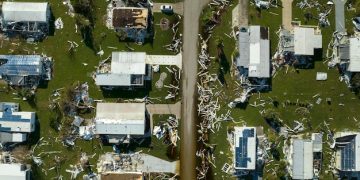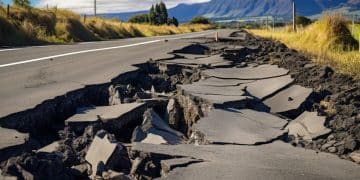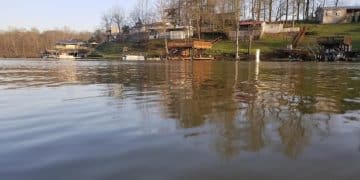National Disaster Recovery Framework: 3-month update for responders
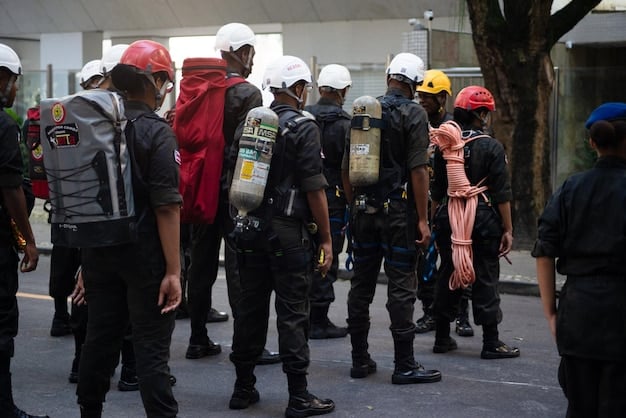
The National Disaster Recovery Framework (NDRF) is redefining how the United States rebuilds after disasters, providing a unified and strategic approach to recovery.
Its recent three-month update showcases significant progress in coordination, resource management, and sustained support for emergency responders, key elements in strengthening national resilience.
As disasters grow in frequency and intensity, understanding the evolving National Disaster Recovery Framework (NDRF) becomes vital for those on the front lines.
The framework’s latest advancements reflect a commitment to improving recovery processes, empowering communities, and ensuring a faster, more effective return to stability.
The core principles of the National Disaster Recovery Framework (NDRF)
The National Disaster Recovery Framework (NDRF) serves as a guide for how the nation conducts recovery, providing a flexible structure that enables disaster recovery managers to operate in a unified and collaborative manner.
It outlines core functions and coordinating structures necessary for effective recovery efforts at all levels of government, as well as with private and non-profit organizations.
Its origins trace back to the recognition that recovery is a complex, multi-faceted process requiring long-term commitment and strategic planning, well beyond the immediate response phase.
At its heart, the National Disaster Recovery Framework (NDRF) emphasizes several key principles that drive its implementation.
These include: supporting community recovery, recognizing the importance of local leadership, promoting collaboration and coordination among all stakeholders, and fostering resilience for future events.
The framework aims to ensure that communities not only return to pre-disaster conditions but also emerge stronger and more resilient.
For emergency responders, understanding these foundational principles is essential for integrating their on-the-ground efforts into a larger, more comprehensive recovery strategy.
Community-centric recovery
A cornerstone of the National Disaster Recovery Framework (NDRF) is its focus on community-centric recovery.
This means that recovery efforts are tailored to the unique needs and priorities of the affected community, rather than a one-size-fits-all approach.
Local governments, community organizations, and residents are actively involved in planning and implementing recovery strategies, ensuring that solutions are culturally appropriate and sustainable.
- Empowering local leaders in decision-making processes.
- Integrating community feedback into recovery plans.
- Tailoring recovery efforts to specific demographics and needs.
- Building local capacity for long-term self-sufficiency.
This localized approach often involves extensive public outreach and engagement, creating a sense of ownership and partnership among those most impacted by disaster.
Emergency responders, while often focused on immediate life-saving activities, play a crucial role in providing initial assessments and feeding critical information back into the community-centric planning process.
Integrated and coordinated approach
The National Disaster Recovery Framework (NDRF) promotes an integrated approach to recovery, bringing together various agencies and organizations under a common operational picture.
This coordination is vital for optimizing resource allocation, minimizing duplication of efforts, and addressing the diverse challenges that arise during recovery.
From housing and infrastructure to economic revitalization and health services, the framework ensures that all sectors are working in concert towards shared recovery goals.
Moreover, the framework provides clear guidance on establishing Recovery Support Functions (RSFs), which are interagency teams that address specific recovery needs.
These functions include Community Planning and Capacity Building, Economic Recovery, Health and Social Services, Housing, Infrastructure Systems, and Natural and Cultural Resources.
Each RSF brings together experts from different federal agencies, working to provide technical assistance and resources to state, tribal, local, and territorial governments during long-term recovery efforts.
This integrated and coordinated approach helps to streamline operations and ensure that no critical recovery aspect is overlooked.
Updates in the last three months: What’s new for responders
The National Disaster Recovery Framework is a living document, subject to periodic reviews and updates to reflect lessons learned from real-world events and advancements in disaster management practices.
Over the past three months, several significant adjustments have been made, particularly impacting emergency responders.
These updates aim to enhance efficiency, improve interagency communication, and provide more robust support for personnel engaged in protracted recovery operations.
One notable development focuses on refining the integration of initial response data into long-term recovery planning. Historically, there could be a disconnect between the immediate aftermath and the strategic recovery phases.
The recent updates emphasize standardized data collection protocols for first responders, ensuring that critical information gathered during the initial hours and days of a disaster is seamlessly transitioned and utilized by recovery planners.
This proactive approach helps to inform more accurate damage assessments and prioritize recovery needs more effectively from the outset, directly benefiting communities by expediting the recovery process.
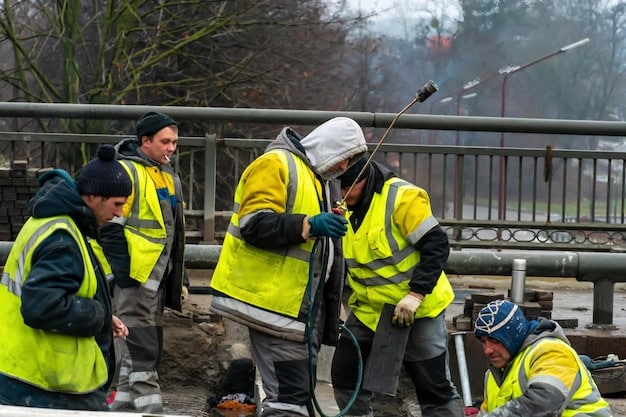
Enhanced training and preparedness modules
A crucial area of focus in the 3-month update involves new training and preparedness modules specifically designed for emergency responders.
These modules aim to equip responders with a broader understanding of their role within the entire lifecycle of a disaster, not just the initial response.
By emphasizing recovery-oriented perspectives during training, responders are better prepared to contribute to sustained efforts.
- Workshops on long-term structural damage assessment.
- Training in psychosocial support for affected communities and fellow responders.
- Modules on integrating environmental considerations into recovery.
- Simulation exercises specifically focusing on multi-phase recovery scenarios.
These enhanced training programs are designed to be accessible and practical, offering a mix of online resources, in-person seminars, and field exercises.
Many of these modules are being rolled out through existing federal, state, and local training academies, ensuring widespread adoption and consistent standards.
The goal is to create a more versatile and recovery-aware response force that can adapt to evolving disaster needs.
Streamlined resource allocation and support systems
Another significant update pertains to streamlining the allocation of resources and support systems for emergency responders involved in recovery.
Recognizing the inherent challenges of prolonged deployment and the need for continuous support, the framework has introduced new mechanisms to facilitate faster access to essential resources, including mental health support, logistical aid, and specialized equipment.
This ensures that responders remain effective and resilient throughout the recovery timeline.
New digital platforms and standardized request procedures have been implemented or refined to expedite resource requests. This means less bureaucracy and quicker turnaround times for critical supplies and personnel.
Furthermore, there’s a stronger emphasis on pre-negotiated contracts with private sector partners to ensure rapid deployment of specialized services, from heavy equipment operators to communications experts.
These improvements are vital for sustaining the morale and operational capacity of responders who often face immense physical and psychological strain during extensive recovery missions.
The role of emergency responders in long-term recovery
While often associated with immediate life-saving efforts, the role of emergency responders extends significantly into the long-term recovery phase of a disaster.
Their initial actions and sustained presence provide critical foundations for restoring normalcy and building resilience.
Responders are not just the first line of defense; they are also integral to the ongoing efforts that allow communities to rebuild and thrive after devastation.
Their unique insights, gathered from direct exposure to the disaster zone, are invaluable for shaping effective recovery strategies. The transition from response to recovery can be fluid, and responders often bridge this gap.
Their ability to conduct rapid damage assessments, identify immediate hazards, and provide initial humanitarian aid directly influences the speed and direction of subsequent recovery activities.
Furthermore, their interactions with affected populations yield crucial qualitative data about community needs and vulnerabilities, information that is difficult to obtain through other means.
Successful long-term recovery hinges on effective communication and collaboration between these frontline personnel and the broader recovery planning teams, underscoring the interconnectedness of all phases of disaster management.
Initial damage assessment and reporting mechanisms
Emergency responders are often the first to arrive on the scene of a disaster, making their initial damage assessments critically important.
These assessments go beyond immediate hazards; they provide the foundational data for federal and state assistance programs, influencing everything from individual aid applications to large-scale infrastructure projects.
New reporting mechanisms introduced with the recent NDRF updates aim to standardize and expedite this data collection.
- Utilizing geo-spatial mapping tools for real-time damage reporting.
- Standardizing terminology for damage classification across agencies.
- Integrating mobile applications for direct field-to-database input.
- Prioritizing critical infrastructure assessment for immediate stabilization.
These advancements ensure that information is not only gathered quickly but also in a format that is readily usable by recovery support functions and decision-makers.
The accuracy and completeness of these initial reports can significantly impact the efficiency of resource allocation and the overall recovery timeline, benefiting affected communities by accelerating the assistance process they desperately need.
Community engagement and support
Beyond their technical roles, emergency responders often serve as vital links between affected communities and the wider recovery infrastructure.
Their presence offers a sense of security and hope, while their direct engagement facilitates the identification of unmet needs and community strengths.
Responders frequently help disseminate critical information about available aid, services, and recovery resources, acting as trusted messengers in chaotic environments.
This engagement extends to providing psychosocial support, often informally through compassionate interaction, and formally by connecting individuals with mental health services.
Understanding the unique cultural contexts and sensitivities of diverse communities is crucial, and responders are often at the forefront of this nuanced interaction.
The National Disaster Recovery Framework (NDRF) emphasizes the importance of culturally competent engagement, recognizing that effective recovery is built on trust and mutual understanding between responders and the populations they serve.
This holistic approach to community support solidifies the responder’s indispensable role in long-term healing.
Navigating interagency coordination challenges
The complexity of disaster recovery often lies in the multitude of agencies, organizations, and governmental levels involved. Navigating this intricate web of stakeholders presents significant coordination challenges.
The National Disaster Recovery Framework (NDRF) serves as a blueprint to mitigate these difficulties, promoting a unified approach across federal, state, local, tribal, and territorial entities, as well as private sector and non-profit partners.
However, the practical application of this coordination framework demands constant refinement and learning, especially in the wake of lessons from recent events.
One persistent challenge is ensuring seamless communication and information sharing among disparate groups, each with its own protocols and priorities.
The recent 3-month update builds upon existing mechanisms to foster better interoperability, recognizing that effective coordination is not merely about having a framework, but about actively practicing its principles in real-time scenarios.
For emergency responders, understanding the intricacies of who is responsible for what, and how their immediate actions contribute to the larger recovery mosaic, is crucial for preventing silos and maximizing collective impact.
Unified command structure and communication protocols
A cornerstone of effective interagency coordination is the establishment of a unified command structure.
This principle, clearly articulated within the NDRF, ensures that multiple agencies with differing legal, geographic, and functional responsibilities can work together effectively under a single, agreed-upon command system.
It avoids duplication of effort and clarifies chains of command, which is particularly vital during the dynamic and often chaotic initial phases of disaster recovery, directly impacting how responders are deployed and managed.
- Standardized communication forms and channels for all agencies.
- Regular interagency briefing schedules and information exchanges.
- Joint training exercises focusing on multi-agency response and recovery.
- Clear delineation of roles and responsibilities through Memoranda of Understanding (MOUs).
The recent updates reinforce the importance of these protocols, introducing technologies and best practices to enhance their implementation, especially in complex, multi-jurisdictional incidents.
For emergency responders, this means clearer directives, better situational awareness, and a more efficient allocation of their critical skills, ensuring that their efforts are aligned with overarching recovery objectives.
Integrating private sector and non-profit contributions
Beyond government agencies, the private sector and non-profit organizations play an indispensable role in disaster recovery. From providing essential supplies and services to offering volunteer support and specialized expertise, their contributions are immense.
The NDRF facilitates the integration of these diverse partners, recognizing that a whole-community approach is essential for comprehensive recovery, directly leveraging resources that responders might not independently access.
The 3-month update has focused on refining mechanisms for engaging these non-governmental stakeholders more effectively.
This includes developing clear pathways for donations, coordinating volunteer efforts to meet specific community needs, and establishing pre-disaster agreements with businesses for critical services.
For responders, this means access to a wider array of resources and support, from heavy equipment to temporary housing solutions, which can significantly accelerate the recovery pace and reduce the burden on public resources.
Building these relationships proactively strengthens the overall recovery ecosystem and allows for a more agile and comprehensive response when disaster strikes.
Technology and innovation in Disaster Recovery Operations
The landscape of disaster recovery is continuously evolving, heavily influenced by advancements in technology and innovative operational approaches.
For emergency responders, leveraging these new tools and methodologies is critical for improving efficiency, enhancing safety, and ultimately accelerating the recovery process.
The National Disaster Recovery Framework (NDRF) actively encourages the adoption of such innovations, recognizing their potential to transform how communities rebuild and become more resilient.
The recent 3-month update places a significant emphasis on integrating cutting-edge technologies into various aspects of recovery, from damage assessment to public information dissemination.
From the deployment of drones for aerial surveillance and mapping to the use of advanced analytics for prognostic modeling, technology is fundamentally reshaping the capabilities of recovery operations.
These tools provide unprecedented levels of data and situational awareness, allowing responders and planners to make more informed decisions rapidly.
Moreover, communication platforms and digital collaboration tools are facilitating seamless information exchange across diverse teams, breaking down traditional silos and fostering a more unified approach to complex recovery challenges.
Embracing these technological shifts is not just about adopting new gadgets; it’s about fundamentally rethinking and optimizing recovery workflows for greater effectiveness and community impact.
Utilizing drones and remote sensing for damage assessment
One of the most impactful technological advancements for disaster recovery operations is the widespread adoption of drones (unmanned aerial vehicles) and remote sensing capabilities.
These tools offer an unparalleled ability to rapidly assess damage in areas that may be unsafe or inaccessible to ground personnel, significantly speeding up the critical initial assessment phase.
The 3-month update highlights refined protocols for deploying these assets, ensuring their data is accurately captured and integrated into the broader recovery framework, directly aiding responders.
- High-resolution photographic and video capture of affected areas.
- Thermal imaging capabilities to identify hidden hazards or structural weaknesses.
- 3D mapping and modeling for detailed structural analysis.
- Rapid deployment in hazardous environments, reducing risk to human responders.
The data collected by drones can be used to generate comprehensive reports for insurance claims, engineering assessments, and large-scale infrastructure planning, dramatically reducing the time and resources traditionally required for such tasks.
This not only makes damage assessment safer and more efficient for emergency responders but also provides a more granular understanding of the impact for recovery strategists.
Advanced data analytics and AI for resource optimization
Beyond data collection, the application of advanced data analytics and artificial intelligence (AI) is revolutionizing how resources are optimized during disaster recovery.
By processing vast amounts of data, from demographic information and infrastructure integrity to supply chain logistics and weather patterns, AI algorithms can identify patterns, predict future needs, and recommend optimal resource allocation strategies.
This predictive capability is a game-changer for emergency responders, allowing for more proactive and targeted interventions.
These analytical tools help in prioritizing critical recovery tasks, identifying vulnerable populations that require immediate attention, and forecasting potential bottlenecks in supply chains.
For example, AI can help determine the most efficient routes for delivering aid, predict the demand for specific construction materials, or even optimize the deployment of medical personnel.
By integrating these intelligent systems into the NDRF, the latest update empowers decision-makers with deeper insights, translating into more efficient, equitable, and effective recovery outcomes for affected communities and supporting responders in their mission.
Challenges and future outlook for NDRF implementation
While the National Disaster Recovery Framework (NDRF) provides a robust structure for post-disaster rebuilding, its implementation is rarely without challenges.
The complexity of disasters, the unique characteristics of affected communities, and the sheer scale of recovery needs often test the framework’s flexibility and the adaptability of its stakeholders.
For emergency responders, navigating these operational and strategic hurdles is a constant learning process.
The recent 3-month update, while addressing many pressing issues, also implicitly acknowledges ongoing challenges and points towards future directions for improvement.
One persistent challenge lies in maintaining sustained engagement and funding over the often-protracted timelines of disaster recovery. Initial enthusiasm and resource availability can wane as time passes, potentially leaving communities in limbo.
Furthermore, adapting the framework to deal with increasingly frequent and intense climate-related events presents an evolving environmental challenge.
Looking ahead, the NDRF aims to become even more resilient, anticipatory, and equitable, ensuring that future recovery efforts build stronger, safer, and more inclusive communities that directly benefit the personnel on the ground.
Sustaining community engagement and long-term funding
A critical challenge in any long-term recovery effort is sustaining community engagement beyond the initial disaster phase and securing consistent funding over several years.
Communities often face “recovery fatigue,” where residents and local leaders become exhausted by the demands of the rebuilding process.
The 3-month update emphasizes strategies to bolster sustained involvement, recognizing that locally driven recovery is more effective and durable.
- Developing communication plans for continuous outreach to community members.
- Establishing multi-year funding streams and diverse financial partnerships.
- Training local community leaders in disaster recovery project management.
- Creating accessible platforms for ongoing feedback and participation.
For emergency responders, this means continued collaboration with community groups to ensure that needs assessments remain up-to-date and that resources are directed to where they are most effective.
Innovative funding models, including public-private partnerships and resilient bond programs, are also being explored to ensure that recovery projects do not stall due to financial constraints.
Adapting to climate change and increased disaster frequency
The escalating impact of climate change, leading to more frequent and severe weather events, presents a formidable challenge to disaster recovery. Traditional recovery models, designed for less frequent, acute events, are being stretched thin.
The National Disaster Recovery Framework (NDRF) is continually being adapted to incorporate principles of climate resilience, focusing on “building back better” and addressing the root causes of vulnerability, directly impacting the operational contexts for emergency responders.
Future iterations of the NDRF are expected to place an even stronger emphasis on pre-disaster mitigation, early warning systems, and nature-based solutions that can lessen the impact of future events.
This includes fostering climate-smart infrastructure development and promoting ecological restoration projects alongside traditional recovery efforts.
For emergency responders, this translates into a need for training in new hazard types, understanding climate-vulnerable populations, and participating in long-term resilience planning that extends far beyond individual disaster events, preparing them for an evolving threat landscape.
Training and professional development for responders
The efficacy of the National Disaster Recovery Framework (NDRF) ultimately hinges on the capabilities and preparedness of the personnel who implement it.
For emergency responders, continuous training and professional development are not merely beneficial; they are essential for adapting to the dynamic and challenging environment of disaster recovery.
The recent 3-month update has underscored the critical importance of investing in the human capital of the emergency response community, ensuring that their skills, knowledge, and well-being are prioritized as they undertake arduous recovery missions.
Training programs related to the National Disaster Recovery Framework (NDRF) encompass a broad spectrum of competencies, from specialized technical skills to leadership and collaborative capabilities.
These programs aim to build a versatile and resilient workforce capable of addressing the multifaceted demands of recovery, which invariably extend well beyond the immediate emergency.
By fostering a culture of continuous learning and professional growth, the framework seeks to empower responders to not only react effectively to crises but also to proactively contribute to the long-term resilience and health of affected communities.
The latest updates reflect a commitment to integrated, forward-thinking educational initiatives for those on the front lines.
Specialized certification programs for recovery specialists
Recognizing the specialized nature of long-term recovery, the National Disaster Recovery Framework (NDRF) encourages and supports the development of specialized certification programs for recovery specialists within the emergency responder community.
These programs provide in-depth knowledge and practical skills tailored to the unique demands of each Recovery Support Function (RSF), ensuring a higher level of expertise and coordination.
- Certification in housing recovery strategies and temporary sheltering solutions.
- Advanced training in economic recovery and business continuity planning.
- Specialized courses in mental health and psychosocial support for disaster survivors.
- Certifications focused on environmental restoration and cultural heritage protection.
These certifications not only enhance individual responder capabilities but also create a cadre of experts who can lead and guide complex recovery projects more effectively.
The professionalization of recovery roles ensures that communities receive the most competent and informed support, accelerating their journey towards full restoration and building back stronger than before.
Mental health and well-being support for responders
The prolonged and often traumatic nature of disaster recovery work takes a significant toll on the mental and emotional well-being of emergency responders.
A critical aspect emphasized in the latest National Disaster Recovery Framework (NDRF) update is the provision of robust mental health and well-being support services.
This acknowledges that the resilience of communities is intrinsically linked to the resilience of those who serve them, prioritizing the sustained capacity of the response force.
These support systems include access to counseling, peer support networks, stress management training, and post-traumatic stress prevention programs.
The goal is to destigmatize mental health challenges within the responder community and ensure that help is readily available and accessible.
By prioritizing the well-being of its personnel, the National Disaster Recovery Framework (NDRF) aims to maintain a healthy, effective, and sustainable emergency response workforce, capable of navigating the emotional and physical demands of long-term recovery and fulfilling their critical societal function.
| Key Aspect | Brief Description |
|---|---|
| 🔄 Core Principles | Community-centric, collaborative, and resilience-focused guidance for disaster recovery. |
| 🆕 3-Month Updates | Enhanced training, streamlined resources, and refined data integration for responders. |
| 🤝 Interagency Coordination | Improved communication and integration of public, private, and non-profit sectors. |
| 🚀 Tech & Innovation | Leveraging drones, remote sensing, and AI for damage assessment and resource optimization. |
Frequently Asked Questions (FAQ) about National Disaster Recovery Framework
The NDRF’s primary goal is to provide a flexible and coordinated approach for effective disaster recovery. It aims to support local communities in rebuilding stronger and more resilient, integrating efforts from all levels of government and partner organizations to address diverse recovery needs systematically.
The recent updates directly impact emergency responders by introducing enhanced training modules, streamlining resource allocation for prolonged recovery efforts, and refining data collection protocols. These changes aim to improve their efficiency, safety, and ability to contribute significantly to long-term community recovery strategies, fostering better overall support.
Beyond immediate response, emergency responders are crucial for long-term recovery through initial damage assessments, providing critical data for resource allocation, and engaging with affected communities. Their insights and continued presence help bridge the gap between initial relief and sustained rebuilding efforts, acting as key conduits for information and support services.
Technology significantly enhances NDRF implementation for responders by enabling more efficient damage assessment through drones and remote sensing. Additionally, advanced data analytics and AI optimize resource allocation and predict future recovery needs, making operations more targeted, safer, and ultimately accelerating community rebuilding processes.
Future challenges for NDRF implementation include sustaining community engagement and securing long-term funding for protracted recovery efforts. Additionally, adapting the framework to the increasing frequency and intensity of climate-related disasters is critical. These challenges require continuous innovation in planning and resource management to ensure resilient outcomes.

